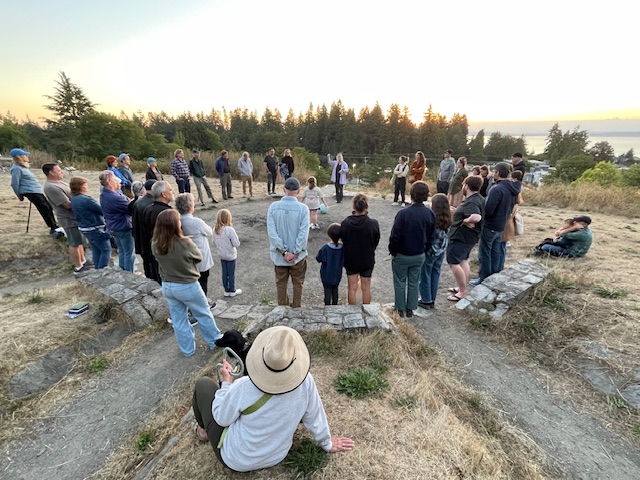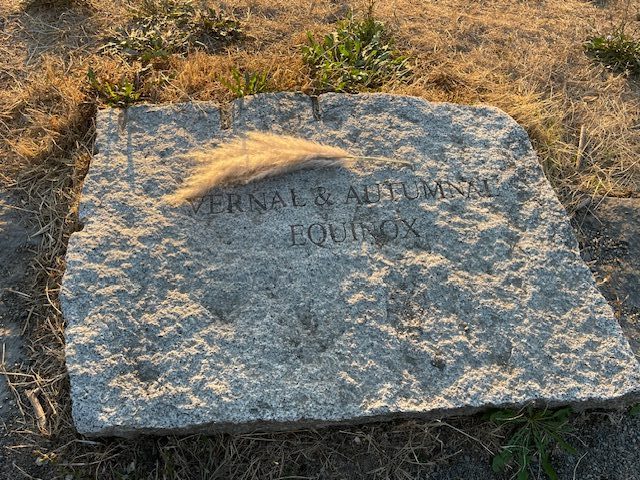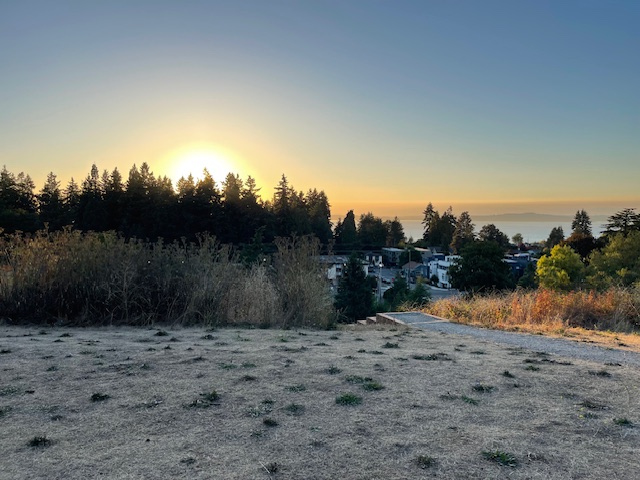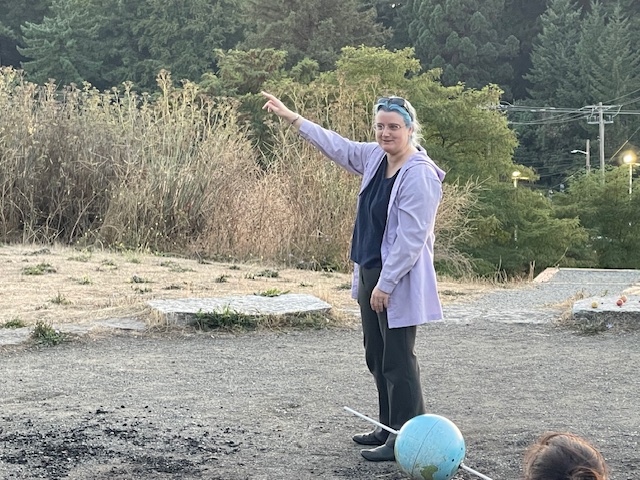By Torin Record-Sand
Reporting for West Seattle Blog
It was a pleasantly warm evening to properly close out summer as Alice Enevoldsen gathered a crowd of around 50 people last night tocelebrate the fall equinox at West Seattle’s Solstice Park. The equinox marks one of two times a year that the night and the day are of equal duration, and notably for us in the northern hemisphere, the passing of summer into fall. This was Alice’s 63rd time hosting the quarterly equinox/solstice sunseet event, which has been taking place since the late 2000s barring some interruptions due to the pandemic.
The crowd started gathering around 6 PM in anticipation of the sunset. The layout of the park has three stones and corresponding passageways which mark the exact location of the sunset for the equinox and solstices throughout the year.
The sunset was at precisely 6:56 PM – as observed. She explained that while the official U.S. Naval Observatory-calculated sunset for our area is 7:06 PM (the time that appears on most phone weather apps), this does not take into consideration local factors that cause the sun to disappear earlier, such as the Olympic Mountains or other environmental factors.
Notably last night, a thin streak of smoke still wavered over the Olympics from ongoing Washington forest fires.
After the sun had set, Alice gave her customary presentation on the scientific explanation and meaning of the equinox. She was helped, as usual, by a young assistant – this time, Jork – who volunteered to represent the sun. During the presentation, Alice and her globe rotated around the volunteer sun to explain the way in which the rotation of the earth causes the changing of the seasons and the corresponding length of the day. At the point of the equinox, she said, the length of the day is changing the fastest – losing about 4 minutes of daylight every day.
Following her presentation, Alice summarized the passing of yet another equinox with reverence. “We are at the same place in our orbit as we were a year ago – the same place in space – isn’t that mindblowingly awesome?” she said.
She presents these events as part of her volunteer work as an official NASA Solar System Ambassador. If you’d like to attend her next event, the sunset watch for the winter solstice will be on December 21. You can also find more information from Alice about local astronomical events or upcoming events by her on her website [https://alicesastroinfo.com/], or her social media feeds.





| 7 COMMENTS